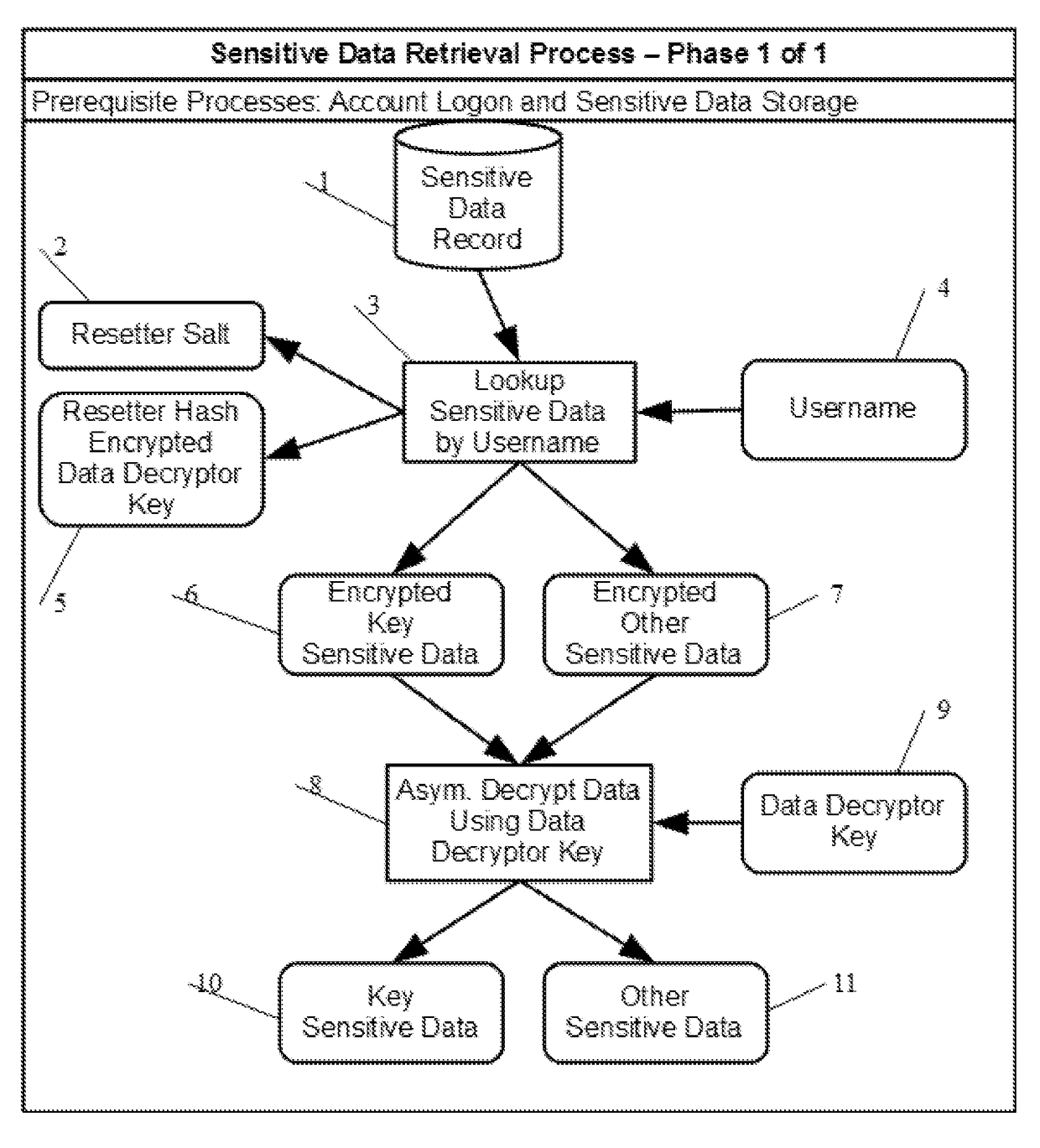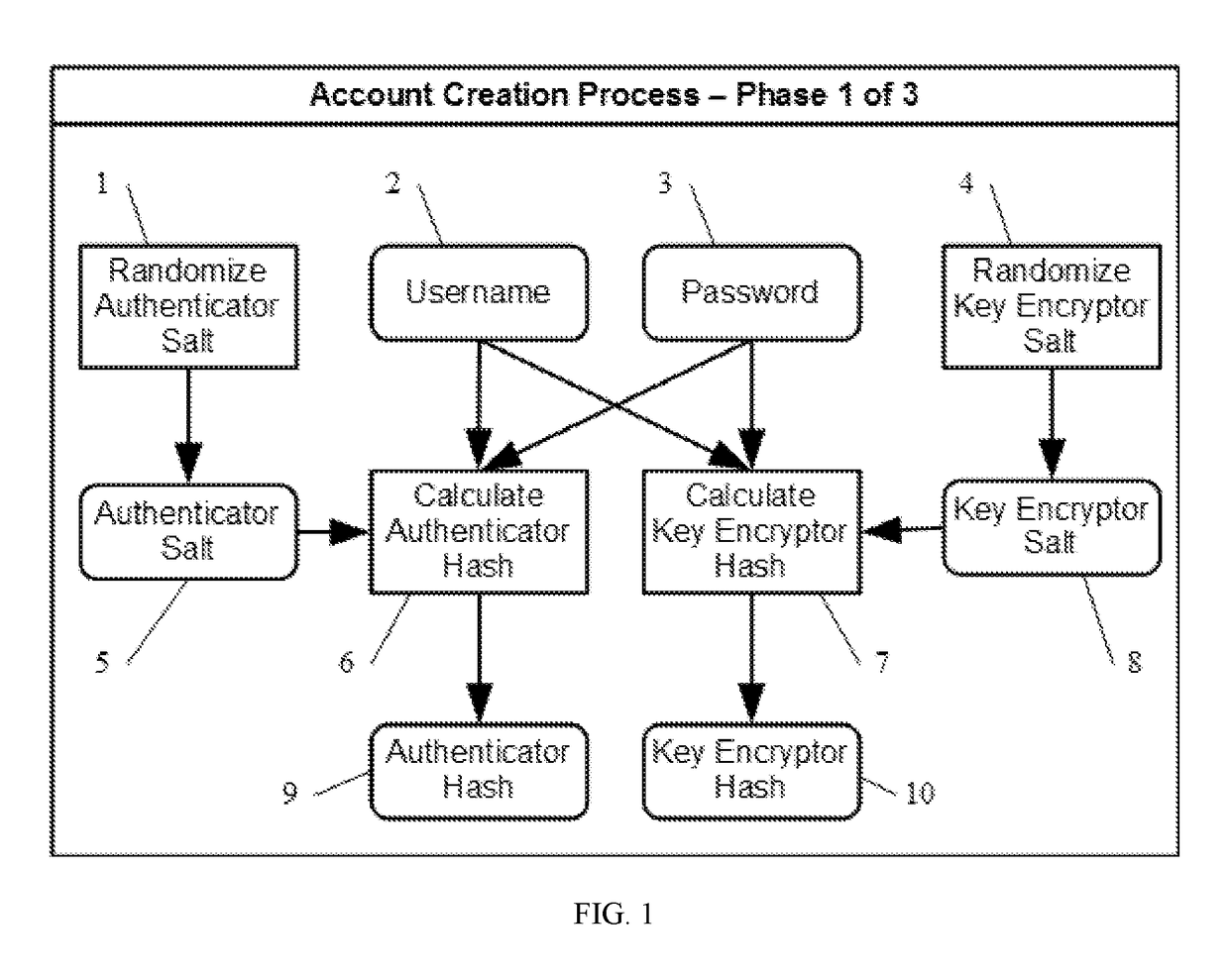Data Owner Controlled Data Storage Privacy Protection Technique
a data owner and privacy protection technology, applied in digital data authentication, instruments, computing, etc., can solve the problems of data exposure of millions of individuals, massive data breaches, and insufficient cryptographic security of protecting an actively used service provider database, so as to achieve more control of sensitive information
- Summary
- Abstract
- Description
- Claims
- Application Information
AI Technical Summary
Benefits of technology
Problems solved by technology
Method used
Image
Examples
Embodiment Construction
[0030]For purposes of this invention the following key terms are defined and / or clarified.[0031]“Account Owner”. See “Data Owner”.[0032]“Asymmetrical Encryption”. Sometimes also called public key encryption. It uses a pair of keys, usually called a public key and a private key, for encryption and decryption. If the private key is used to encrypt, then the public key is used to decrypt. Similarly, if the public key is used to encrypt, then the private key is used to decrypt. An example of an asymmetrical encryption algorithm is RSA.[0033]“Ciphertext”. Encrypted data, as opposed to unencrypted plaintext.[0034]“Database”. Any mechanism used on a computer to store and retrieve data in a non-volatile fashion. This could be a computer file, a relational database system, a non-relational database system, etc.[0035]“Data Owner”. Also sometimes referred to as the account owner. An individual person or entity which is the original source for data shared with a service provider. While...
PUM
 Login to View More
Login to View More Abstract
Description
Claims
Application Information
 Login to View More
Login to View More - R&D
- Intellectual Property
- Life Sciences
- Materials
- Tech Scout
- Unparalleled Data Quality
- Higher Quality Content
- 60% Fewer Hallucinations
Browse by: Latest US Patents, China's latest patents, Technical Efficacy Thesaurus, Application Domain, Technology Topic, Popular Technical Reports.
© 2025 PatSnap. All rights reserved.Legal|Privacy policy|Modern Slavery Act Transparency Statement|Sitemap|About US| Contact US: help@patsnap.com



